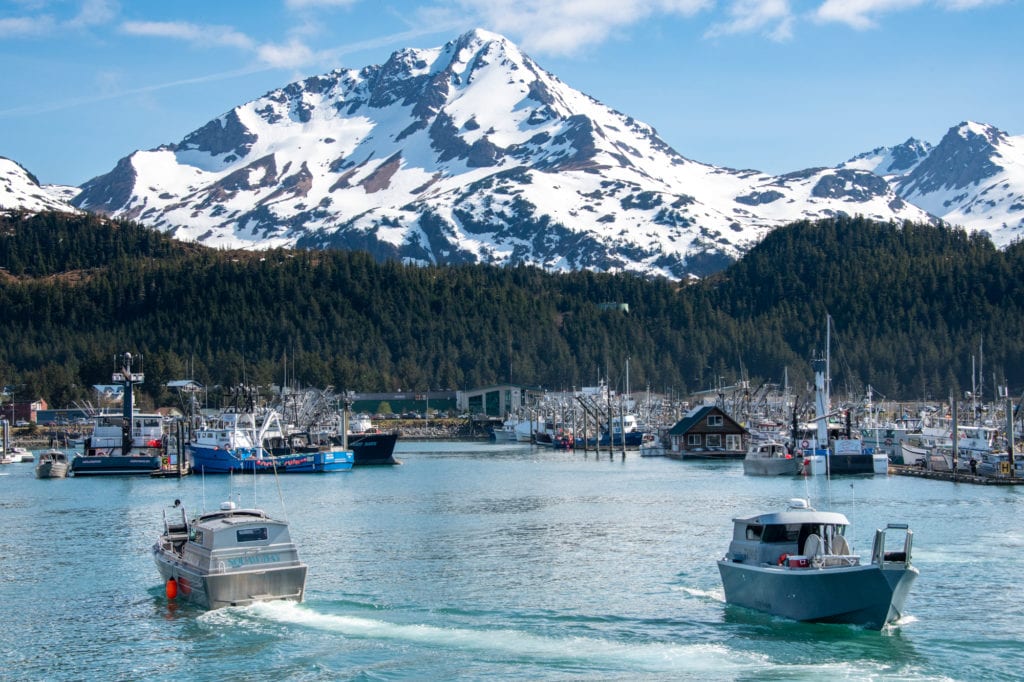
Commercial harvesters got another shot at the Copper River on Monday, June 6, and delivered to processors some 13,663 fish, the bulk of them sockeyes.
A preliminary report from the Alaska Department of Fish and Game showed the harvest from that 12-hour opener added up to some 13,298 reds, 250 cohos, 48 chum, 47 pink and 20 kings.
Harvests for Prince William Sound overall also rose this past week, to an estimated total catch of 1.5 million salmon.
Montague District purse seiners led with 560,469 chums, 1,479 reds, 1,454 pink, 278 kings and 149 cohos, while drift and setnetters in the Eshamy/Main Bay district delivered 348,368 sockeyes, 51,936 chum, 852 pink, 152 Chinook and 35 cohos.
Purse seiners in the Prince William Sound southwestern district had 192,629 chum, 12,357 reds, 1,625 humpies, 246 kings and 28 cohos.
The grand total for all of Prince William Sound included some 950,017 chum, 543,167 sockeyes, 6,713 kings, 5,278 pink and 471 coho salmon.
At Pike Place Fish Market in Seattle wild Alaska sockeye fillets were sold for $29.99 a pound, and whole four-pound Alaska sockeyes for $79.98 apiece, while 10th & M Seafoods in Anchorage sold fresh fillets of wild Alaska kings for $14.95 a pound.
The preliminary statewide commercial harvest as of Tuesday, July 7, rose to 16.9 million fish, including nearly 13 million sockeyes, 2.3 million chum, 1.7 million humpies 70,000 chinooks, and 9,000 cohos.
An early July surge of the famed run of Bristol Bay salmon pushed the catch in the Egigik District along to more than 4 million sockeyes, plus 3.7 million reds in the Naknek-Kvichak District and 3.4 million reds in the Nushagak. Through July 7, the entire Bristol Bay catch rose to 11.2 million sockeyes.
McDowell Group fisheries economist Garrett Evridge said the holiday weekend likely slowed collection of some salmon harvest data and that he anticipated harvest numbers in his report of June 6 to be revised higher in the upcoming week.
While 2020 harvests overall are slow compared to recent years, improve fishing over the past week is narrowing the gap, Evridge observed in his report on behalf of the Alaska Seafood Marketing Institute. All regions of the state are producing salmon now with Bristol Bay accounting for about 60 percent of the total harvest, measured in numbers of fish, he said.
Year-to-date statewide harvests of sockeyes were 56 percent and 62 percent behind the 2019 and five-year average pace respectively. The deficit was improving though, due primarily to Bristol Bay, which exceeded daily harvest of 1 million fish for the first time of the season Friday, July 3, Evridge said. The current week —July 5-11 – is typically the peak for Bristol Bay production, though early empirical research indicates a late salmon return. Most other sockeye-producing regions were improving, but still generally lagged from historical levels.
The pink salmon harvest to date, while well above 2018, was below other even-numbered years. Total volume of 1.7 million humpies is a relatively small amount of production, equaling about five million pounds or about 3 percent of the 2020 projected total.
Keta production was trending stronger with improved harvests last week in Prince William Sound and relatively strong harvest in the Alaska Peninsula and Aleutian Islands region. Production of humpies was increasing in the Arctic-Yukon-Kuskokwim region, but at a relatively slow pace. Keta harvest in Kodiak has been strong, while the catch in Southeast Alaska and Bristol Bay were behind 2019, Evridge noted.





